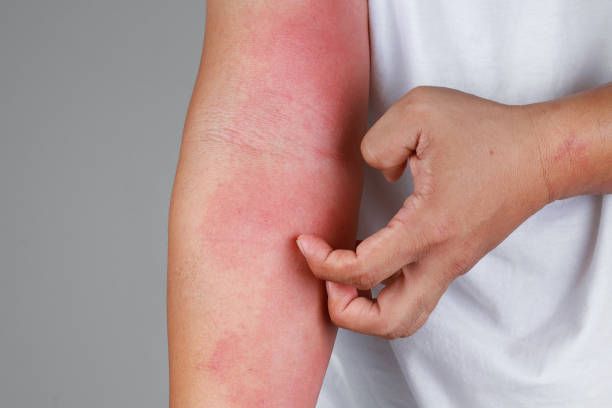Introduction:
Heat rash, also known as prickly heat or miliaria, is a common skin condition that occurs when sweat glands are blocked, trapping perspiration under the skin. This can lead to small, itchy, and often uncomfortable bumps or blisters. Heat rash is particularly prevalent in hot, humid weather, affecting people of all ages.

While heat rash is usually harmless and temporary, it can cause significant discomfort and irritation. Understanding the causes, symptoms, and preventive measures can help you avoid and effectively manage this condition. This comprehensive guide will provide you with practical tips on preventing and treating heat rash, allowing you to enjoy the summer heat with healthy, comfortable skin.
Understanding Heat Rash: Causes and Symptoms
Heat rash develops when sweat ducts become obstructed, leading to sweat accumulation beneath the skin's surface. Several factors can contribute to this blockage, including:
- Hot, humid weather: Increased sweating during hot and humid conditions is a primary culprit behind heat rash.
- Tight clothing: Clothing that fits tightly restricts airflow and traps sweat, increasing the risk of duct blockage.
- Intense physical activity: Engaging in strenuous exercise promotes excessive sweating, potentially overwhelming sweat glands.
- Overheating: Spending prolonged periods in overheated environments, like saunas or hot tubs, can also trigger heat rash.
Recognizing the symptoms of heat rash is crucial for prompt treatment and relief. Common signs include:
- Small, red bumps: The appearance of tiny, reddish bumps or blisters on the skin is a telltale sign of heat rash.
- Itching and prickling sensations: Affected areas often experience intense itchiness, prickling, or a stinging sensation.
- Inflammation and mild swelling: The skin surrounding blocked sweat glands might become slightly inflamed or swollen.
Preventing Heat Rash: Tips for Staying Cool and Dry
Preventing heat rash involves adopting simple lifestyle modifications and practices that help you stay cool and dry. Here are some practical tips to minimize your risk:
- Wear breathable clothing: Opt for loose-fitting garments made of lightweight, breathable fabrics like cotton or linen.
- Stay cool and hydrated: Seek shade or air-conditioned environments during hot weather and drink plenty of fluids to stay hydrated.
- Take cool showers or baths: Cool showers or baths can help lower your body temperature and wash away sweat.
- Use a gentle, fragrance-free soap: Avoid harsh soaps or detergents that can irritate the skin and contribute to blocked pores.
- Pat your skin dry: Instead of rubbing, gently pat your skin dry with a soft towel to avoid further irritation.
- Minimize time in hot, humid environments: Limit exposure to excessively hot and humid places, such as saunas or hot tubs.
Treating Heat Rash: Soothing Irritated Skin
In most cases, heat rash resolves independently with home care measures. Here are some effective treatments to alleviate symptoms:
- Keep the affected area cool and dry: Apply cool compresses or take cool showers to soothe irritated skin and reduce inflammation.
- Avoid scratching: While tempting, refrain from scratching the affected area, as it can worsen irritation and increase the risk of infection.
- Use calamine lotion: Calamine lotion can provide cooling relief from itching and inflammation.
- Apply hydrocortisone cream: Over-the-counter hydrocortisone cream can help reduce inflammation and itching, but use sparingly as directed.
- Wear loose-fitting clothing: Opt for loose-fitting, breathable clothing to allow air circulation and promote healing.
When to Seek Medical Attention
While heat rash typically resolves with home care, it's essential to consult a healthcare professional if:
- Symptoms worsen or persist: If your heat rash worsens despite home treatment or persists for more than a few days, seek medical advice.
- Signs of infection appear: Look out for signs of infection, such as increasing pain, redness, swelling, or pus-filled blisters, and consult a doctor promptly.
- You experience fever or other concerning symptoms: Seek immediate medical attention if you develop fever, chills, or any other unusual symptoms alongside heat rash.





